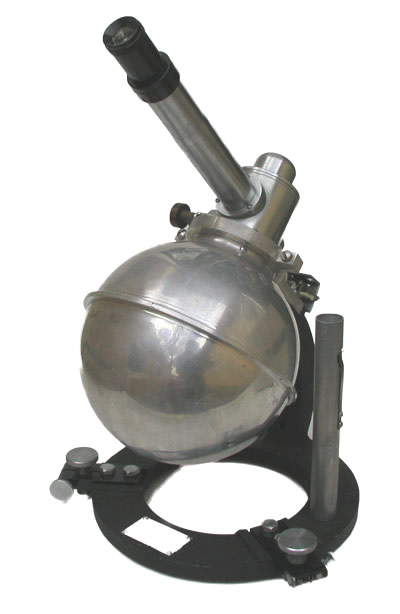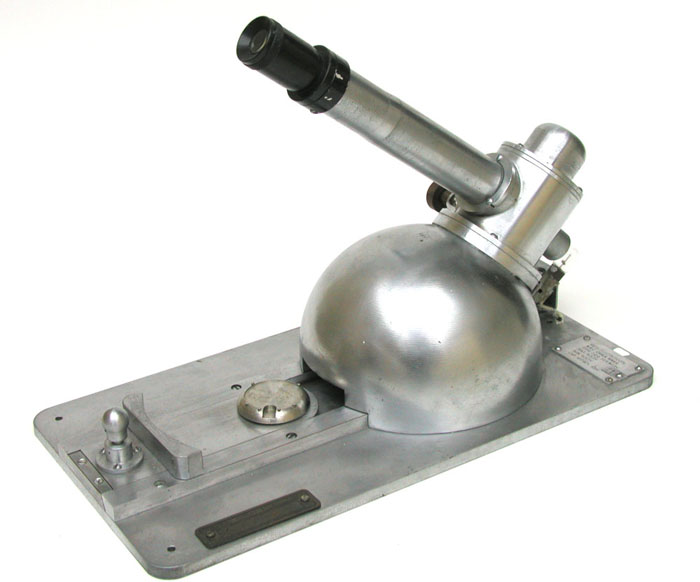Wilfred Mann's NBS Electroscopes (ca. 1945)

These instruments were built at Chalk River Laboratory in Canada sometime around 1945.
The electroscope on the right was designed for measuring gamma-emitting samples. The latter were inserted into the vertical tube in front of the spherical chamber (with the brass clip). This ensured that samples were always counted in the same position with respect to the chamber.
The electroscope shown below was used to measure beta-emitting samples. The latter were inserted into the hemispherical chamber via the sliding drawer (projecting to the right in the photo).

In the late 1940s, Wilfred Mann, who worked at Chalk River during World War II, took them with him to the British Embassy in Washington, D.C. where he served as a liaison between the British and American intelligence communities. While working at the embassy, he had the misfortune to report to the notorious Russian spy Kim Philby. Because of this association, Mann was later accused of being the "fifth man" in Philby's spy ring. To clear his name, Mann wrote the book "Was There a Fifth Man? (Pergamon Press, 1980) in which he proclaimed his innocence.

In the early 1950s, Mann took the electroscopes to the National Bureau of Standards (NBS) where he had been hired to head up the radioactivity section. Later, during the Cuban Missile crisis, Mann became concerned that the NBS might be destroyed in an atomic attack on Washington. To preserve the NBS's capability to make radioactivity measurements, Mann calibrated these two electroscopes (and one other) against the NBS primary radioactivity standards. The electroscopes were then sent to the NBS facility in Colorado. Had Washington and the NBS been destroyed, these electroscopes would have become the nation's primary instruments for radioactivity measurements. Fortunately, they never got their promotion.
Donated by the National Bureau of Standards (now NIST), courtesy of Ron Colle and Larry Lucas.
